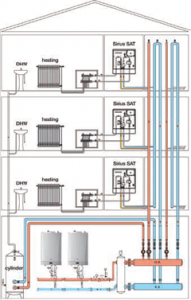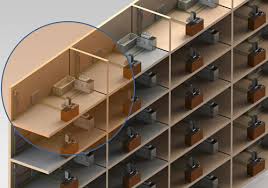What Are Heat Interface Units?
Why Are Heat Interface Units Becoming More Popular?
One of the main attractions of HIUs today is the opportunity for renewable energy that they provide. With energy efficiency being more important than ever, HIUs allow energy conservation through the usage of energy efficient plants, with hot water being produced by a district heating plant and being transferred through heat exchangers to supply on demand hot water and heating. HIUs can be powered by sources of renewable energy and can deliver eco-friendly temperature controls to the occupants of the building. The district heating systems for modern multi-dwelling compexes can use sources such as heat pumps, CHP or solar heat which is more convenient than equipping individual dwellings with their own source of renewable energy. As hot water is supplied rapidly through a plate heat exchanger, the occupants of the building also enjoy higher comfort levels.
Heat Interface Units supply domestic hot water on demand and require no cylinder storage. The flow rate is also much higher than that provided by a traditional combi boiler and therefore those living in the dwellings can enjoy a better quality of life. Heat Interface Units can also help to reduce the level of ongoing maintenance and investment costs. Instead of supplying gas to each individual apartment and installing a domestic boiler in each, heat interface units only need a single hot water riser to be connected to each apartment and the central boiler plant and this results in a significant saving. Because there is also no need to install a gas network across the entire building, installation and maintenance costs are reduced. Installation of HIUs is also easier than installing a traditional boiler, with no need for flues, ventilation routes or gas training qualifications for the installers themselves. This means that maintenance can be carried out by personnel who are not gas qualified which is a lot more convenient.


